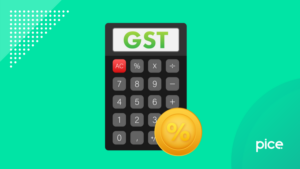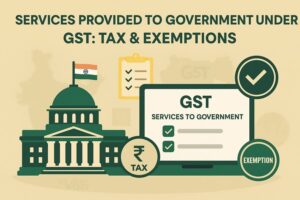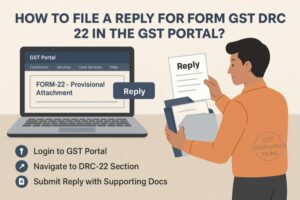Introduction to the Central Goods and Services Tax Act, 2017
- 17 Oct 25
- 13 mins
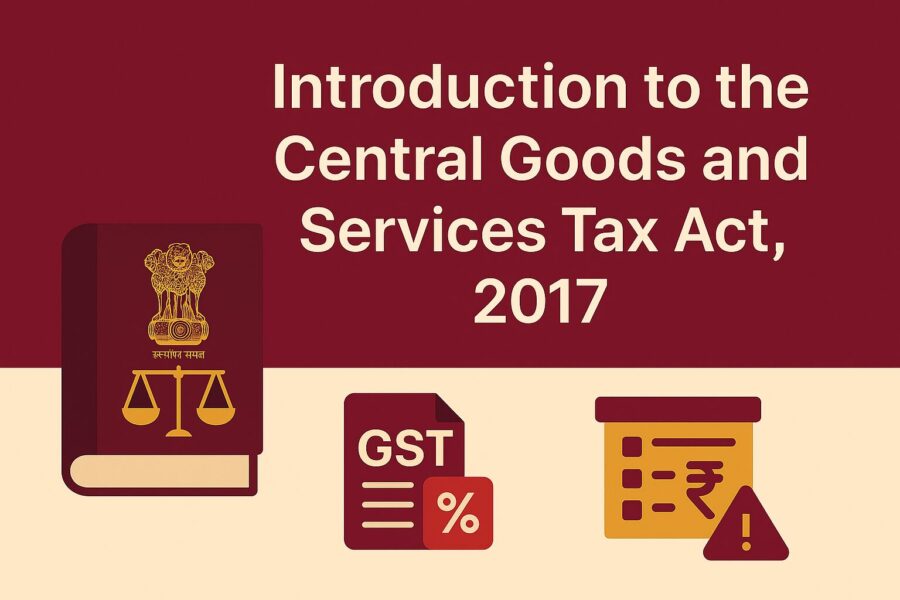
Introduction to the Central Goods and Services Tax Act, 2017
- Historical Background and Emergence of the CGST Act
- Objectives of the Central Goods and Services Tax Act, 2017
- Structure and Scope of the CGST Act
- Features and Provisions of the CGST Act
- Registration and Compliance Requirements as per Central Goods and Services Tax Act, 2017
- Input Tax Credit Mechanism Under CGST Act 2017
- Assessment, Audit and Enforcement of the CGST Act
- Offences, Penalties and Prosecution as per Central Goods and Services Tax Act, 2017
- Impact of the CGST Act on Businesses and the Overall Economy
- Challenges and Ongoing Developments Under the Central Goods and Services Tax Act, 2017
- Conclusion
Key Takeaways
- The CGST Act, 2017 unified India’s indirect tax system under the principle of “One Nation, One Tax”, effective from July 1, 2017.
- It replaced multiple central taxes like excise duty, service tax, and CST with a single comprehensive GST law.
- The Act promotes ease of doing business through self-assessment, digital compliance, and seamless interstate trade.
- Input Tax Credit (ITC) under CGST minimizes cascading taxes and reduces the overall burden on businesses.
- The CGST Act enhances transparency, revenue collection, and economic efficiency, fostering a stronger formal economy.
Central Goods and Services Tax Act, 2017 (CGST Act) is one of the iconic foundations in the field of indirect taxes in India. The CGST Act, which came into effect on July 1, 2017, was enacted on April 12, 2017, and changed the way taxation of goods and services occurs in the country.
The GST law substituted the numerous central indirect tax obligations, simplified the taxation system and facilitated the aim of 'One Nation, One Tax'. In this blog, you get to know about the CGST Act in detail including its formation, purpose, design, highlights, legal requirements and how far it affects businesses and the Indian economy.
Historical Background and Emergence of the CGST Act
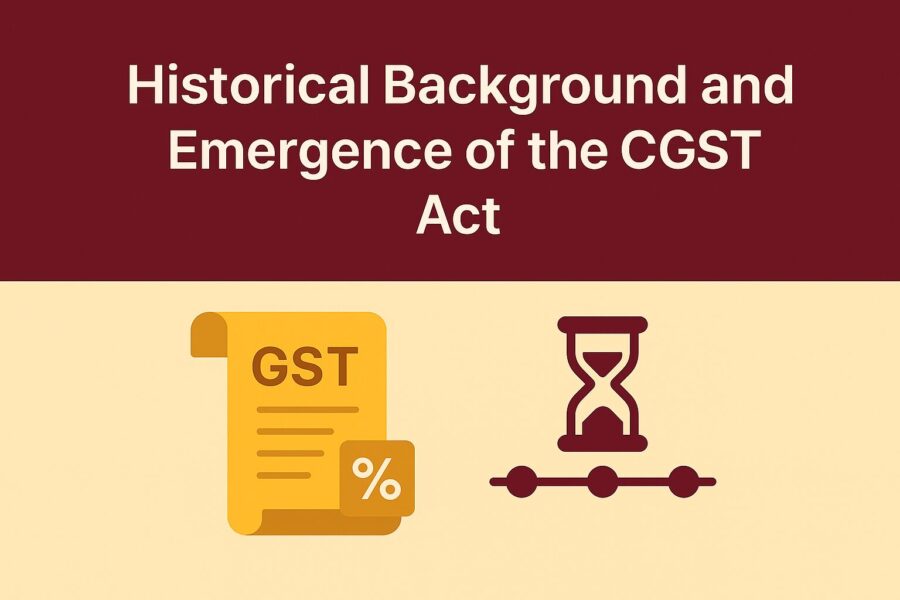
Before the implementation of GST in India, the indirect tax structure was in disarray. The central government introduced several taxes like the Central Excise Duty, Service Tax and Central Sales Tax, whereas the states demanded local Value Added Tax (VAT), Entry Tax and other taxes.
This complexity brought about successive taxes and conformity issues while the free flow of interstate trade was hampered.
It has been understood for a long time that a consistent tax system is needed. Thus, after several years of discussions, the Constitution (101st Amendment) Act, 2016 led the way towards GST. CGST Act was finally enforced to regulate the collection and charging of tax on intra-state supplies by the central government and the State Goods and Services Tax (SGST) Act was put in use to collect and charge taxes at the state level.
Objectives of the Central Goods and Services Tax Act, 2017
A number of major objectives were taken into account when formulating the CGST Act. Meanwhile, the GST law focuses on:
- Removal of Cascading Taxes: The CGST Act is set to remove cascading taxes by eradicating a levy of central-level indirect taxes whilst replacing it with a single harmonised tax. This will make taxpayers pay lower GST rates since they will stop paying tax on the same supply more than once.
- Harmonisation of Taxes: The act aims to establish a unified form of tax imposition within the nation, hence bringing uniformity in the collection and payment of taxes on goods and services.
- Ease of Doing Business: The level of compliance has been simplified as a self-assessment and a common registration process under GST has helped companies trade across state boundaries easily.
- Wider Tax Base and Increased Revenues: CGST strives to increase government revenues by bringing more transactions into the tax net and minimising tax evasion.
- Boost to the Economy: The unified tax regime is intended to foster economic growth by improving efficiency in the supply chain and reducing logistics costs.
Structure and Scope of the CGST Act
The CGST Act was applied to the entire country except for the erstwhile state of Jammu and Kashmir (now covered after its reorganisation). This legal framework has oversight on the collection and charging of tax on any intra-state supply of goods and services.
Most importantly, the act has been structured with a number of chapters and sections. Consequently, businesses can systematically handle various aspects such as registration, supply classification, input tax credit claims, return submissions and penalty payments.
Key terms within the CGST Act include:
- Supply: The Act has a broad definition of supply where it means any form of supply of goods and services in any manner where there is a consideration in the course or furtherance of business. Some transactions without consideration are also part of it.
- Taxable Person: Anyone registered or liable to be registered under the Act is held as a 'taxable person'.
- Input Tax Credit (ITC): These are the procedures which enable companies to recoup the tax they pay on inputs with the tax due on their output supplies.
Features and Provisions of the CGST Act
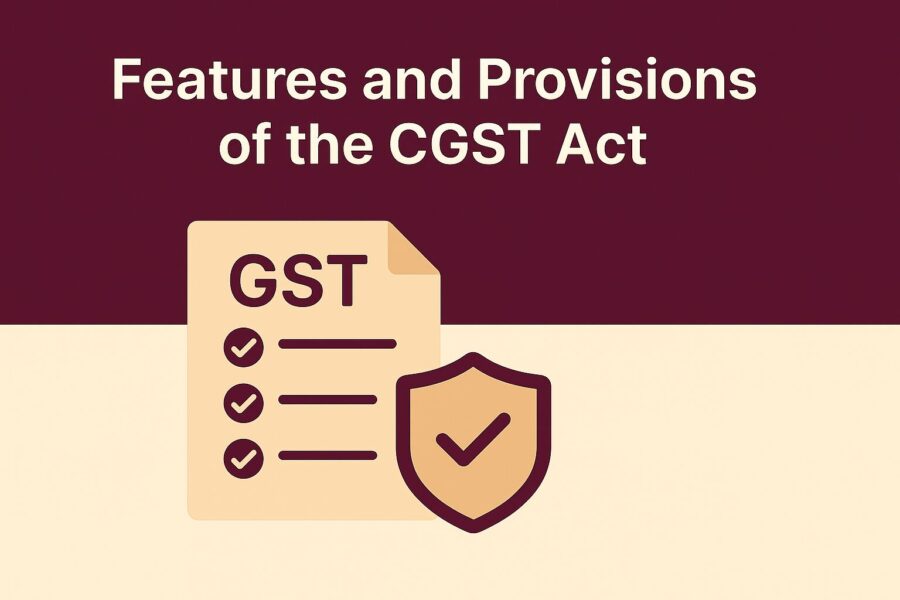
The CGST Act is distinguished by a number of characteristics that differ the law from the previous taxation system.
- Effect on Intra-State Supplies: CGST is levied by the central government on all supplies within a single state, while SGST is levied by the respective state government on the same transaction.
- Input Tax Credit (ITC): One of the standout features is the smooth access to Input Tax Credit (ITC). This allows businesses to reclaim the tax they have paid on inputs, capital goods and input services, which ultimately helps to lower their overall tax burden.
- Self-Assessment: The registered taxpayers are allowed to self-assess their taxes, file returns and pay tax, thereby creating an ease of complying with the rules.
- Seamless E-Commerce Provisions: E-commerce operators can collect the tax at source (TCS) on behalf of sellers on their platform, which reduces the chances of non-compliance in the digital economy.
- Thorough Audit and Inspection: The Act grants tax authorities the power to audit, inspect, search and seize in cases of suspected evasion or non-compliance.
- Anti-Profiteering Measures: Profiteering habits are restrained as businesses are bound to transfer tax deductions to the consumer in a way of low prices.
- Penalties and Prosecution: Stringent penalties and prosecution provisions are in place to deter tax evasion and ensure compliance.
Registration and Compliance Requirements as per Central Goods and Services Tax Act, 2017
Businesses must register under the CGST Act when the aggregate turnover of a company is above the stipulated limit. There are several forms of registration as mentioned in the Act:
- Regular Registration: This is applicable to businesses that are in the supply of goods or services that exceed the threshold.
- Composition Scheme: A simplified scheme of reduced tax rates and minimum compliance requirements on small taxpayers is possible, on condition of meeting specifications and turnover limit.
- Special Registrations: These regulations apply to non-resident taxable persons, e-commerce operators and persons who are obliged to deduct or collect the tax at source.
Compliance Provisions
When it comes to invoicing under CGST, registered individuals are required to issue tax invoices for every taxable supply, ensuring to include all the necessary details. As for returns, you will need to file multiple ones (monthly, quarterly and annually), depending on your taxpayer category.
For tax payments, all registered taxable individuals must use the designated electronic channels and ensure to retain all the necessary documentation. Lastly, the Act allows for regular audits by tax authorities, as well as special audits if there are any suspected discrepancies.
Input Tax Credit Mechanism Under CGST Act 2017
ITC mechanism forms the core of the CGST system such that the businesses can claim the tax paid on the inputs, input services and capital goods consumed by them in the process of undertaking the same. This credit would be used to pay the output tax so that the cascading effect of tax is minimised.
- Eligibility for ITC: Only registered persons are eligible to claim ITC, subject to certain conditions such as possession of a valid tax invoice, receipt of goods or services and payment of tax to the government.
- Reversal of ITC: In the event of failure to pay the supplier within a period of 180 days or where input is utilised in non-business activities, reversal of ITC must occur.
- Restrictions: The Act also lays down certain restrictions and conditions to make use of ITC e.g. blocked credits on certain goods/services.
Assessment, Audit and Enforcement of the CGST Act
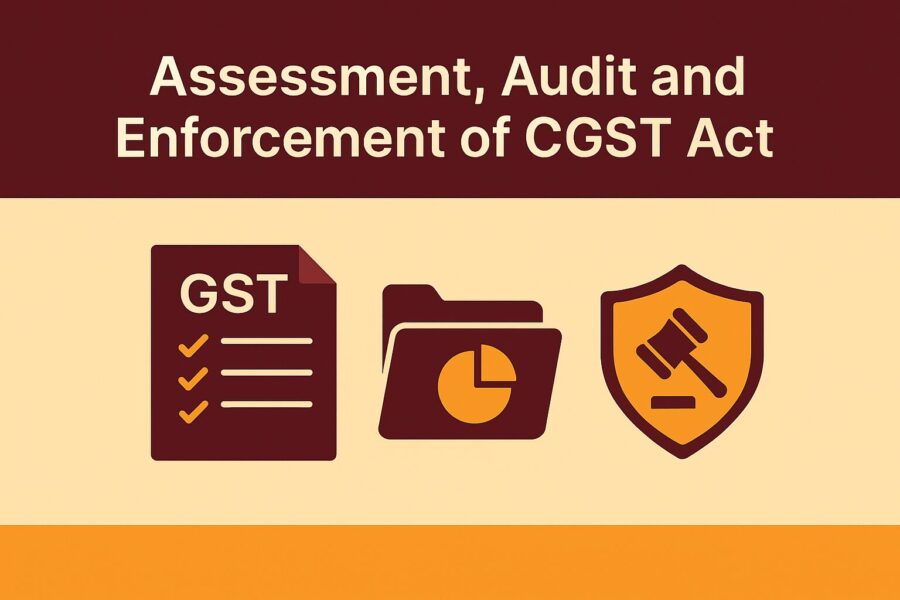
The CGST Act gives the tax authorities the power to enforce necessary compliance in several ways:
Assessment: Taxpayers are primarily required to self-assess their tax liabilities. However, the authorities have the option of doing scrutiny, provisional assessment or best judgment assessment where there is a discrepancy.
Audit: The Act gives provisions on departmental and special audits by a chartered accountant or cost accountant on the ground based on the directions given by the authorities.
Inspection, Search and Seizure: Tax officers are given the authority to examine business premises, carry out a search and make seizures in suspected instances of tax evasion or tax fraud.
Besides, the Central Goods and Services Tax Act outlines procedures for the recovery of unpaid taxes, including attachment and sale of goods or property.
Offences, Penalties and Prosecution as per Central Goods and Services Tax Act, 2017
To ensure strict compliance, the CGST Act prescribes a comprehensive list of offences and corresponding penalties. Some of these are discussed below:
- Common Offences: These comprise supplying goods or services without issuing an invoice, supplying an invoice on fake receipt, availing or using ITC without actually getting delivery of goods or services and non-payment of tax.
- Penalties: There are monetary fines and punishments for different forms of contravention and it is decided with reference to the nature and seriousness of the offence. To give an example, the inability to pay tax may impose a penalty on a figure equal to the tax money that one evades.
- Prosecution: Grievous offences like intentional evasion of tax, issuance of false invoices or toiling the authorities may result in a criminal case and even imprisonment.
- Compounding of Offences: The CGST Act even has provisions related to the compounding of offences whereby offenders can avoid prosecution by paying a compounding fee.
Impact of the CGST Act on Businesses and the Overall Economy
The implementation of the CGST Act has had a transformative impact on businesses and the broader Indian economy. Let us find out how:
- Tax Structure Simplification: To cut down the administrative burden on businesses and the cost of compliance laid on businesses, the Act has simplified the structure of taxes levied. Various central taxes have been replaced by one tax.
- Increased Transparency: ITC mechanism and digital compliance have enhanced transparency and decreased the chances of tax evasion.
- Boost to Formalisation: The Act has created an incentive for businesses so that they formalise their business operations to enjoy the ITC and be a part of the formal supply chain.
- Superior Logistics Management: The removal of inter-state check posts and harmonisation of tax rates have led to faster movement of goods and reduced logistics costs.
- Higher Tax Revenue Collection: This has resulted in an increment in tax collection by the government due to the formation of a widened tax base and an increase in compliance.
- Consumer Benefits: The anti-profiteering clauses guarantee that the gains of the lowered rate of tax get transferred to consumers by charging low prices.
Challenges and Ongoing Developments Under the Central Goods and Services Tax Act, 2017
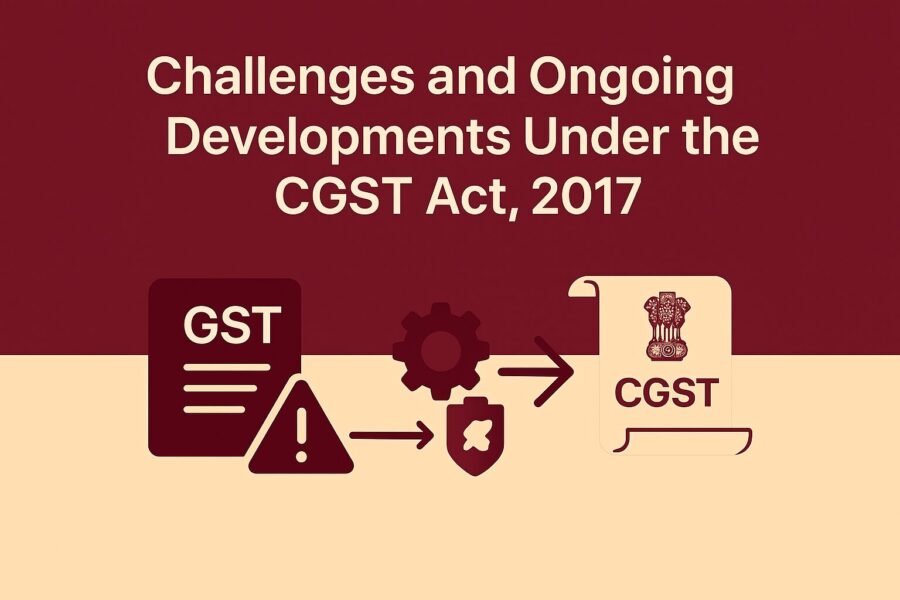
While the CGST Act brings a lot to the table, it has not been without its complexities:
- Complexity in Compliance: The sheer number of returns, constant rule changes and occasional glitches in the GST portal have posed challenges for taxpayers at times, particularly for small businesses.
- Interpretational Issues: Some parts of the law may seem to be a bit confusing, leading to disputes and legal arguments that call for clarifications and updates.
- Transition Issues: Shifting from the old tax system to GST came with its own set of significant challenges for businesses.
- Evolving Legal Framework: The CGST Act has seen multiple amendments and clarifications to tackle new issues and address the concerns of stakeholders. The GST Council has been set up to recommend key aspects of such an evolving framework to the government.
The government is actively working to improve the CGST framework through regular notifications, circulars and amendments, all with the goal of making the system more user-friendly and efficient.
Conclusion
Central Goods and Services Tax Act, 2017 is a paradigm shift in the realm of indirect taxation in India. The Act has been a key instrument towards a stronger and better functioning tax ecosystem through integrating transparency and easing compliance.
In spite of issues that still exist, the continued reforms and stakeholders' involvement will further streamline the system. Both the business and consumer communities need to know the provisions and implications of the CGST Act to see them through the changing scenario of indirect taxation in India.
💡If you want to streamline your payment and make GST payments via credit, debit card or UPI, consider using the PICE App. Explore the PICE App today and take your business to new heights.
 By
By 





